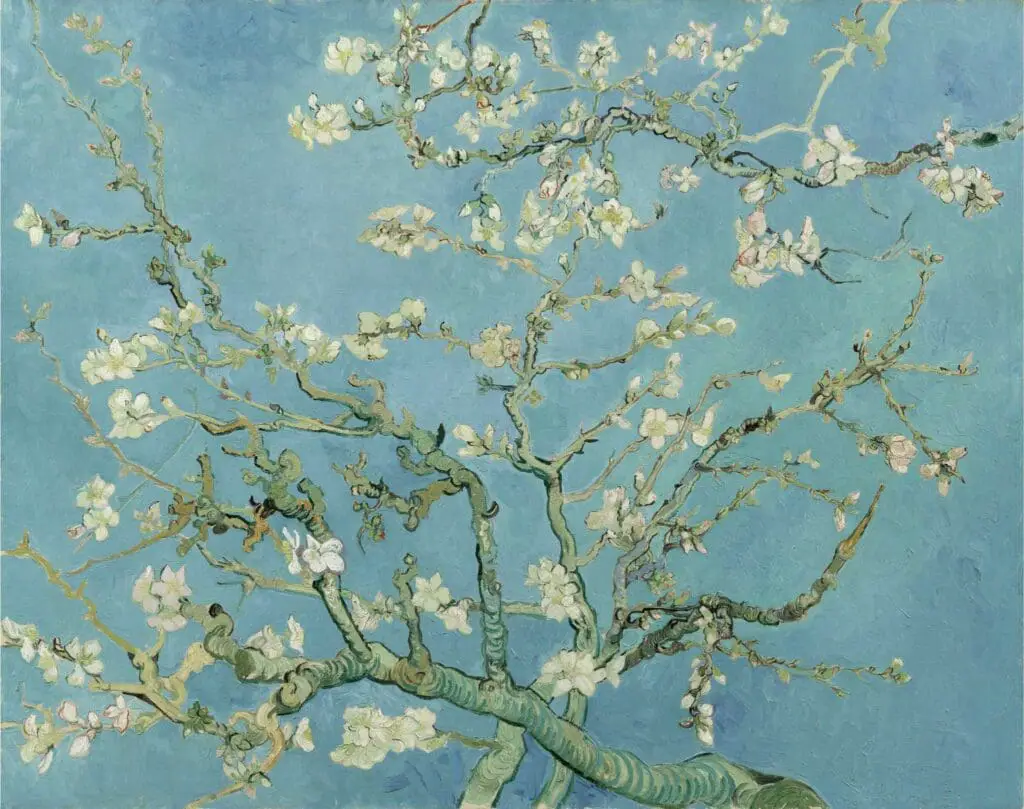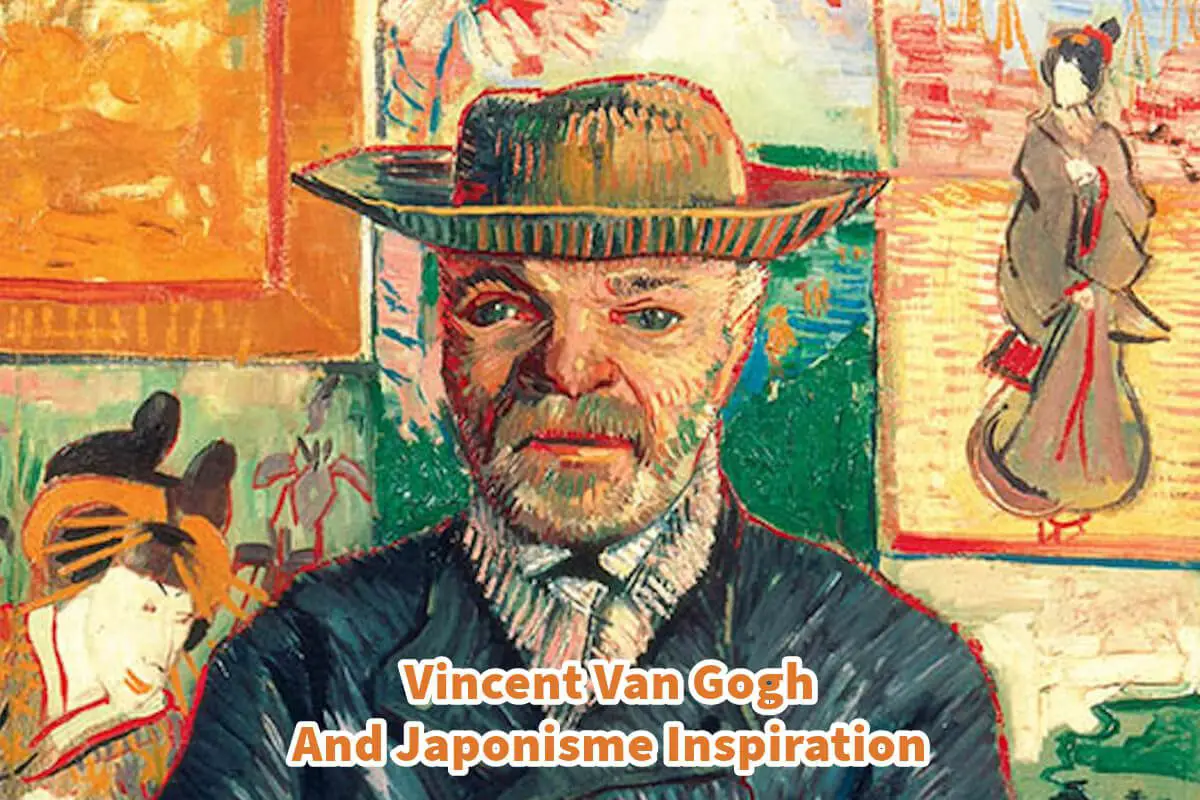Vincent Van Gogh, an artist renowned for his exceptional creative prowess and profound emotional depth, enjoys global acclaim for his mesmerizing work.
While his remarkable artistic talents and tumultuous life are extensively chronicled, an aspect of his creative evolution frequently takes a back seat in discussions—the significant influence of Japanese art. The phenomenon known as Japonisme profoundly impacted Van Gogh’s artistic oeuvre, transcending fleeting inspiration to become a powerful force that reshaped his artistic perspective and ushered in uncharted artistic horizons.
Table of Contents
- Vincent Van Gogh and Japonisme Inspiration: Inspiration From Japan
- A New Style And Japanese Art
- Shattered Ideals Of Artist Community
- Van Gogh And Innovation After The Japanese Model
- Related Questions
Vincent Van Gogh and Japonisme Inspiration: Inspiration From Japan
Vincent Van Gogh, synonymous with artistic brilliance and emotional depth, is celebrated worldwide for his captivating artworks. While his extraordinary talent and turbulent life are well-documented, one aspect of his journey that often remains overshadowed is his profound inspiration from Japanese art.
The impact of Japonisme on Van Gogh’s work was not merely a passing fancy; it was a transformative force that reshaped his artistic vision and opened up new horizons. Read on as we delve into the fascinating story of how Vincent Van Gogh discovered inspiration from Japanese prints and how this encounter with Oriental art changed the course of his artistic expression.
Discovering Oriental Art
The latter half of the nineteenth century witnessed a burgeoning fascination with all things Japanese in Western Europe, a cultural phenomenon often referred to as “Japonisme.” However, this trend initially didn’t capture Vincent Van Gogh’s attention.
Unlike Paris, where the Japanese art craze was sweeping through the artistic community, the Netherlands had few artists who delved into the intricacies of Japanese art.

In the vibrant atmosphere of Paris, Van Gogh first encountered the profound impact of Oriental art on the Western art scene. During this time, he decided to modernize his artistic style.
Van Gogh’s initial foray into the world of Japanese art was marked by a purchase of a stack of Japanese woodcuts in Antwerp, which he promptly pinned to the walls of his room. These exotic images from the Far East lingered in his mind as he corresponded with his brother, Theo, describing the city and its surroundings.
Japan In Paris And Vincent Van Gogh
In 1886, Vincent Van Gogh made a pivotal move by relocating to his brother Theo’s apartment in Paris. Together, the brothers embarked on a journey of collecting Japanese prints, gradually building up a substantial collection.
For Vincent, these prints soon transcended being mere curiosities. He began to view them as artistic exemplars on par with the greatest masterpieces in Western art history. While the exact size of Vincent’s collection remains unknown, his letters refer to “hundreds” of prints, illustrating the extent of his fascination.
Spatial Effect And Color And Japanese Art
Japanese artists had a distinctive approach to composition. They often left the middle ground of their artwork empty, enlarged objects in the foreground, and sometimes omitted the horizon or abruptly cropped elements at the edges.
This unique approach to spatial arrangement fascinated Western artists. Vincent Van Gogh, in particular, was drawn to the Japanese visual innovations, which encouraged him to break away from the traditional Western artistic conventions of depicting scenes from close to far away, akin to a peep show.
Van Gogh incorporated these Japanese influences into his work. He admired the unusual spatial effects, the vivid expanses of color, the depiction of everyday objects, and the meticulous attention to natural details. Most importantly, he embraced the exotic and joyful atmosphere prevalent in Japanese prints.
A New Style And Japanese Art
Vincent Van Gogh’s engagement with Japanese art went beyond mere imitation. He drew inspiration from his artist friend Émile Bernard, who was at the forefront of developing new ideas about the direction of modern art.

Using Japanese prints as a foundation, Bernard stylized his paintings by employing large areas of simple colors and bold outlines.
Motivated by Bernard’s innovation, Van Gogh embarked on a journey to suppress the illusion of depth in his work, favoring a flatter, more two-dimensional surface. However, he melded this pursuit of flatness with his signature swirling brushwork, creating a unique blend of Western and Eastern influences that became a hallmark of his mature style.
In a letter to his brother Theo, he said this about the Japanese influence and his artwork:
Vincent to his brother Theo from Arles, 15 July 1888
All my work is based to some extent on Japanese art...”
Japan In The South Of France
After spending two years in the bustling artistic milieu of Paris, Vincent Van Gogh sought solace in the serene landscapes of Arles in the South of France in February 1888. He hoped to find the “clearness of the atmosphere and the gay color effects” reminiscent of Oriental prints.

In a letter to his friend Gauguin, who shared his fascination with Japanese art, Van Gogh humorously noted that he peered through the train window to see if the scenery was starting to resemble Japan.
This childlike anticipation reflected his belief, shared with Gauguin, that artists should venture into more southern, primitive regions to discover vibrant colors and push art to new frontiers. It was with this conviction that he relocated to Arles.
Shattered Ideals Of Artist Community
Vincent Van Gogh had ambitious dreams of establishing an artists’ community in Arles, akin to the Japanese Buddhist monks who lived in similar communal setups. However, his vision was not fully realized.
Only Gauguin joined him in Arles; frequent disagreements marked their artistic collaboration. Gauguin, a proponent of painting from imagination, encouraged Van Gogh to adopt a more stylized approach, emphasizing that a painting should not be a mere photograph.

Sadly, as their conflicts escalated, Van Gogh’s mental health deteriorated, leading to his admission to a hospital and later a psychological clinic. His faith in his artistic abilities waned, and references to Japanese printmaking in his letters became increasingly sparse.
Van Gogh And Innovation After The Japanese Model
Throughout his life, Vincent Van Gogh’s art was rooted in nature, a commonality he recognized with Japanese artists. Japanese prints provided him with the ideal blueprint for modernization, allowing him to respond to the call for a more primitive kind of painting without relinquishing nature as his starting point.

Vincent Van Gogh’s journey into the world of Japanese art and his embrace of Japonism were transformative experiences that left an indelible mark on his artistic vision. Japanese prints not only served as a source of inspiration but also encouraged him to innovate and break away from conventional artistic norms.
Van Gogh’s artistic evolution, marked by a fusion of Western and Eastern influences, remains a testament to the enduring power of cross-cultural inspiration in art. His legacy inspires artists and art enthusiasts, reminding us of the boundless possibilities that arise when different cultures and artistic traditions intersect.
Anita Louise Art is dedicated to art education, great artists, and inspiring others to find and create their art. We love art that uplifts and inspires. #ArtToMakeYouSmile! #ArtToMakeYouHappy!
If you are interested to see any of my art, you can find out more by clicking here. If you are interested in what inspires me and my paintings, you can discover more by clicking here.
We have a free newsletter and would love you to be part of our community; you can subscribe to the newsletter by clicking here. If you have any questions, I would be happy to talk to you at any time. You can reach me, Anita, by clicking here.
Subscribe to our Anita Louise Art YouTube Channel, filled with great videos and information, by clicking here.
Related Questions
Claude Monet And The Rise Of Japonisme
Japan opened its doors to the Western world for trade in 1853, and with that came a flood of Japanese art, artifacts, and textiles to Europe. Many Impressionist artists were fascinated with Japan, but one heavily influenced by Japanese art and the Japanese artist’s technique was Claude Monet.
By clicking here, you can discover more by reading Claude Monet And The Rise Of Japonisme.
Edgar Degas And The Influence Of Japonisme On His Work
Edgar Degas was among the Western artists deeply inspired by this Japanese art form. His works bear a clear imprint of the aesthetics and techniques he absorbed from Japanese Ukiyo-e masters. Read on; we delve into how his exposure to Japanese artistry shaped Degas’s art and examine some of his works that display this definitive influence.
You can discover more by reading Edgar Degas And The Influence Of Japonisme On His Work by clicking here.
Impressionism And The Influence Of Japonisme
The word Japonisme was used to describe the influence of Japanese art on Impressionism art. The Impressionism artists would study Japanese art and then incorporate parts of the Japanese art techniques and inspiration into their art. Japanese art influenced artists like Claude Monet, Vincent Van Gogh, Edouard Manet, Mary Cassatt, Edgar Degas, Paul Gauguin, James McNeill Whistler, and Henri de Toulouse-Lautrec.
By clicking here, you can discover more by reading Impressionism And The Influence Of Japonisme.

